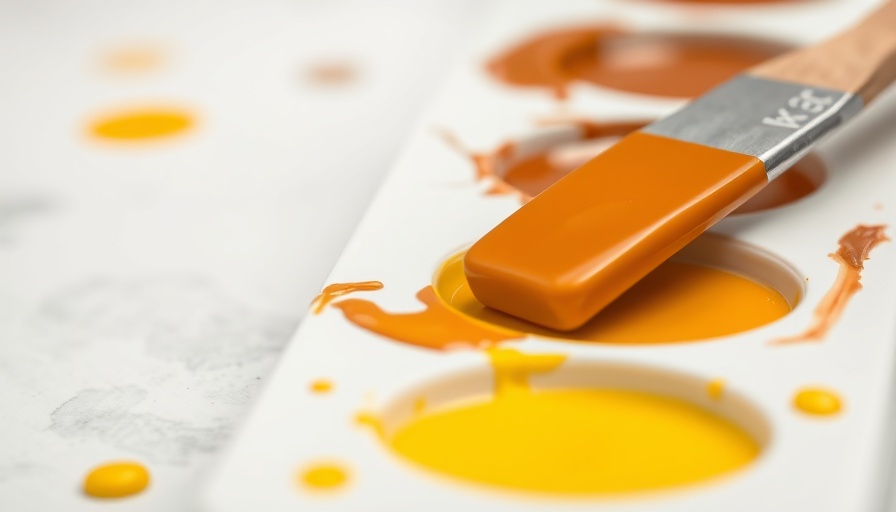
Unlocking the Magic of DIY Brown Paint
Have you ever been deep into a painting project, only to realize you’re out of brown paint? Don’t sweat it! You can create your very own shade of brown with a few primary and secondary colors. This guide will reveal simple methods to blend hues from your existing paints, ensuring your creative flow isn’t interrupted.
The Basics of Color Mixing: Turning Primary Colors into Brown
At the heart of color mixing are the primary colors: red, yellow, and blue. Combine these to give life to a host of secondary colors and ultimately craft your desired shade of brown. For instance, mixing equal parts of red and green can often yield a chocolatey color, while blending yellow and purple might just bring about the warm earth tones often sought after for home decor. Knowing how these colors interact opens up opportunities not only for creating brown paint but for a rainbow of hues!
The Color Wheel: Your New Best Friend
If painting is a regular pastime for you, consider investing in a color wheel. This handy tool simplifies the relationship between colors and helps with mixing guidance. When you know the complementary colors, it’s easier to intuitively create the right shade to fit your project. Imagine being able to visually cycle through the vast options until you find that perfect hue! Plus, it will help you choose wall colors that complement one another beautifully.
Tips for Successful Mixing: Get the Perfect Brown
When embarking on your DIY journey to make custom brown paint, remember a few key tips:
- Mix Like with Like: Ensure that paints are of the same type, (e.g., only mix acrylics with acrylics) to achieve a smooth texture and blend.
- Start Small: Only pour a small amount of each color onto your palette and build it up gradually. It’s easy to add more but hard to remove once the colors combine.
- Use a Mixing Palette: A flat mixing board or a piece of wax paper provides an easy cleanup and a great surface for watercolor or acrylic mixing.
Real-Life Applications: Your Home Projects
Understanding how to make brown paint isn’t just a fun skill—it can transform your DIY home decor projects. You might find yourself creating deeper, richer colors for furniture upcycling or art projects around the house. Custom shades mean that you can personalize hearth and home with added character, making your spaces uniquely yours. Imagine crafting the exact shade to match cherished decor or artwork!
Why Color Knowledge Matters: From Education to Home Artistry
Knowing about color theory is not just useful for painting; it enhances creativity and fosters a better understanding of design principles. It enriches the experience of any artistic endeavor, whether it’s painting a room, creating art, or designing a space that reflects personal taste. As you mix, blend, and innovate, you gain insights that resonate throughout your home and life.
By mastering simple color mixing techniques, you not only enhance your project but also deepen your connection with artistic practices. So, gather those paints and start your journey to creating custom brown paint for any project!
 Add Row
Add Row  Add Element
Add Element 


 Add Row
Add Row  Add
Add 

Write A Comment